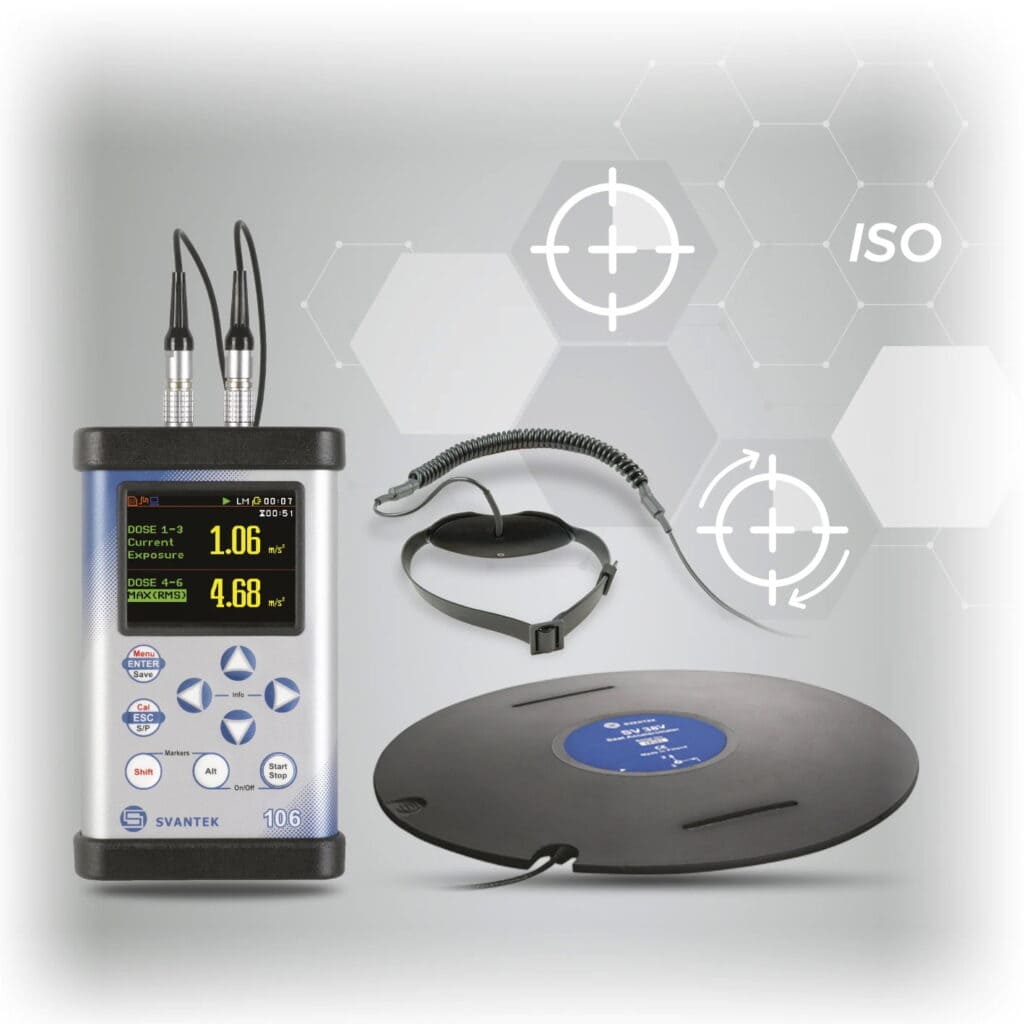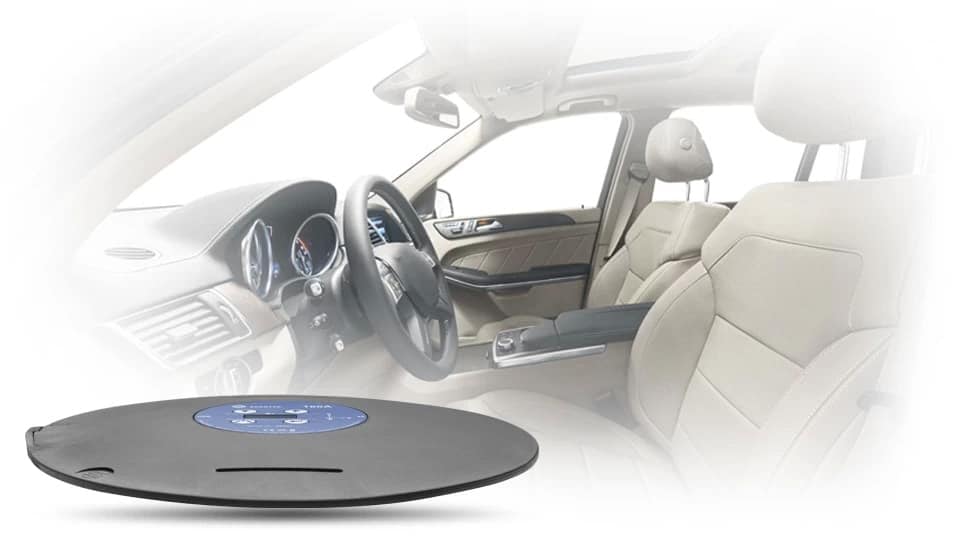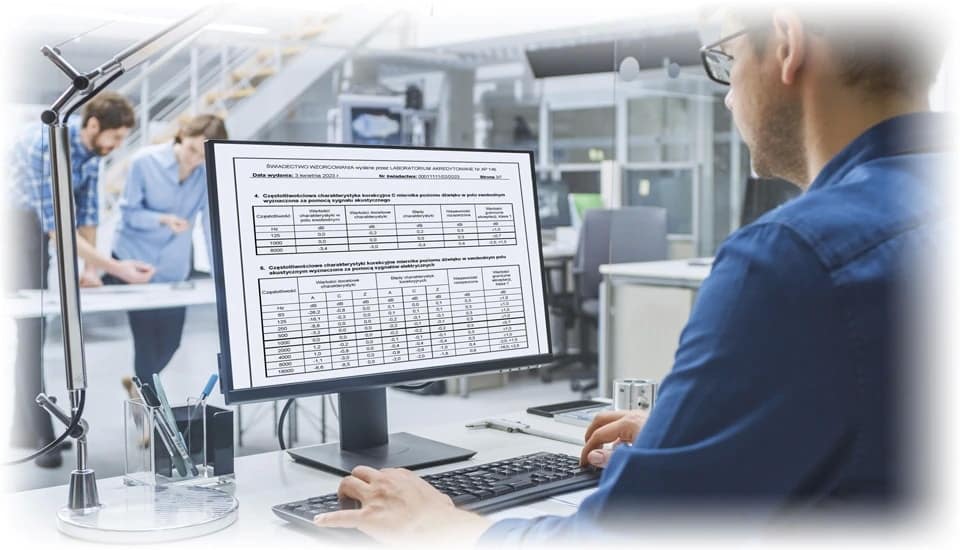Calibration of human vibration meters for hand-arm and whole-body vibration measurements.
Human-exposure vibration is classified into two categories: whole-body vibration and hand-arm vibration. Vibration meters used for such measurements typically include two triaxial accelerometers. One is designed specifically for hand-arm measurements and is shaped to be mounted on handles of vibrating tools. The other is a seat-pad accelerometer, used for whole-body measurements—capturing vibrations transmitted through the legs, pelvis, or back.
These meters are primarily used for occupational vibration assessments. To ensure accurate measurements and reliable results, they must be regularly calibrated. For accredited laboratories, traceability of measurements is required, which makes calibration essential.


At the SVANTEK calibration laboratory, human vibration meters are calibrated in accordance with ISO 8041-1:2017 “Human response to vibration – Measuring instrumentation – Part 1: General purpose vibration meters.” The instrument’s performance is evaluated against the criteria defined in this standard.
The calibration process includes determining the sensitivity of both transducers, the accuracy at the reference frequency, frequency weighting filters, frequency response, amplitude linearity, instrumental noise, overload indication, cross-axis sensitivity, and the internal timing system of the device. All tests are carried out using the specific transducer for either hand-arm or whole-body vibration as required.
The first page of the calibration certificate contains details about the customer, environmental conditions in the laboratory during the calibration, and the date of the measurement. The following pages present the measurement results in tabular form, including associated uncertainties.

Calibration of human vibration meters is a time-intensive process. Low-frequency measurements require longer averaging times, and each of the three axes must be tested individually for accuracy, response, and linearity. Due to the number of measurements involved, calibration of a meter with two triaxial sensors can take up to 3–4 working days. Additionally, the equipment must stabilize to climatic equilibrium before testing begins, which adds several more hours.

The calibration service covers meters equipped with both hand-arm and whole-body vibration transducers. The current calibration pricing is available via the Svantek online store.